I recently ran an informal poll on Twitter, Facebook and Google+ about which of three French cities, Paris, Lyon or Nice was best for a city break. I fully expected Paris to top the poll. However, in a close run battle it was Lyon that topped the poll by just 2 votes. I promised myself that I would write a post on the city that topped the poll. So Lyon it is.
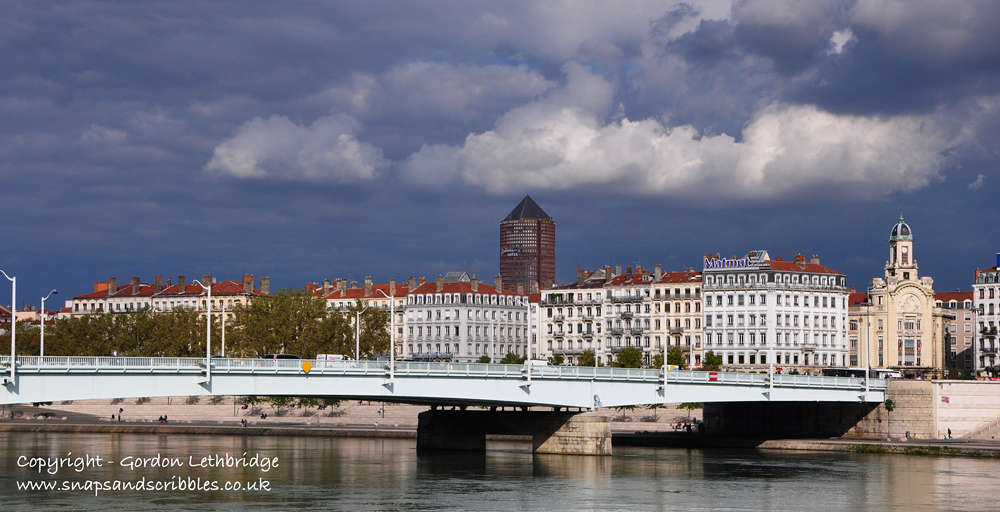
I have already explored Vieux Lyon on the west bank of the Saone in a previous post which you can read here. In this post I will explore Lyon between it’s two great rivers the Saone and the Rhone; an area known as the Presqu’île. It is quite a compact area and is where the Lyonnais come to shop, eat and be entertained.
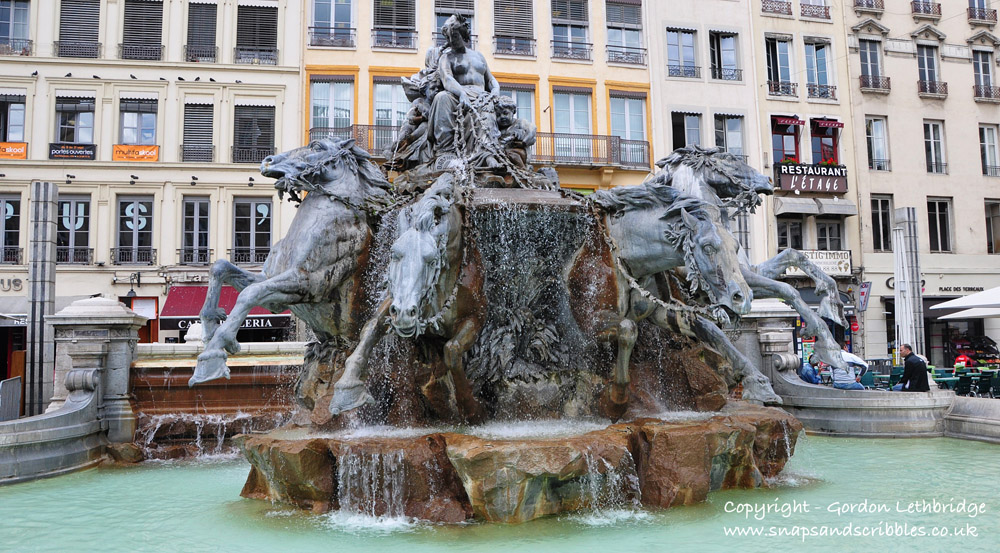
The Place des Terreaux is a good place to start as it is a de facto transport hub both above and below ground. The most striking feature of this square is, for me, the great fountain of a female charioteer and wildly straining horses. Rejected by Bordeaux this fountain, created by Batholdi who went on to create the Statue of Liberty, was eagerly accepted by Lyon.
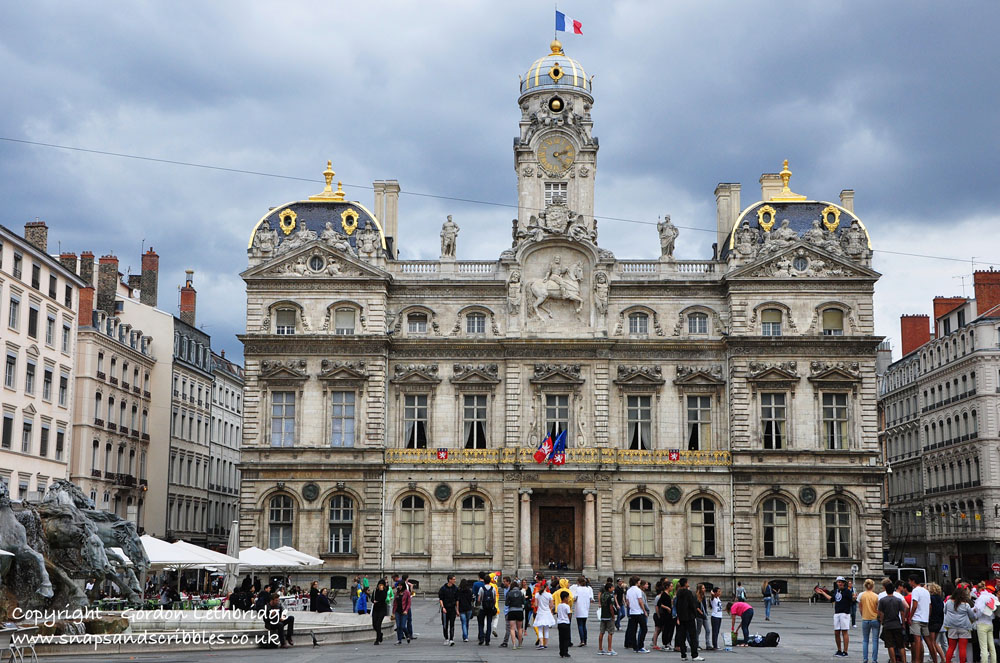
The fountain faces the Museum of Fine Arts which is housed in the Palais St Pierre. The courtyard is a cool secluded place where sculptures are displayed, some of which are by Rodin. The Hôtel de Ville with its elegant 17th century facade also overlooks the square and its many cafes.
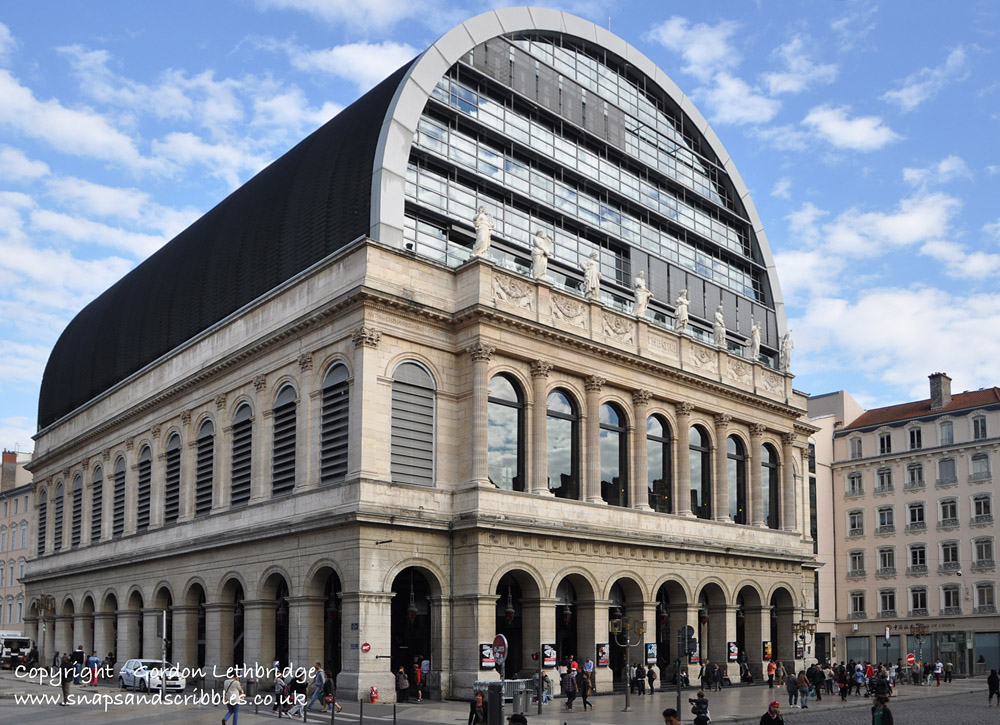
The Opera on Place de la Comédie behind Hôtel de Ville was built in 1826 but was completely redesigned in the 1990s. Externally the facades were left pretty much intact but a glass vaulted roof was added giving it, in my opinion, the appearance of a London railway station. Contemporary sculptures and fountains fill the square in front and beside it. It always seems busy here not least because there is a large metro and bus interchange.
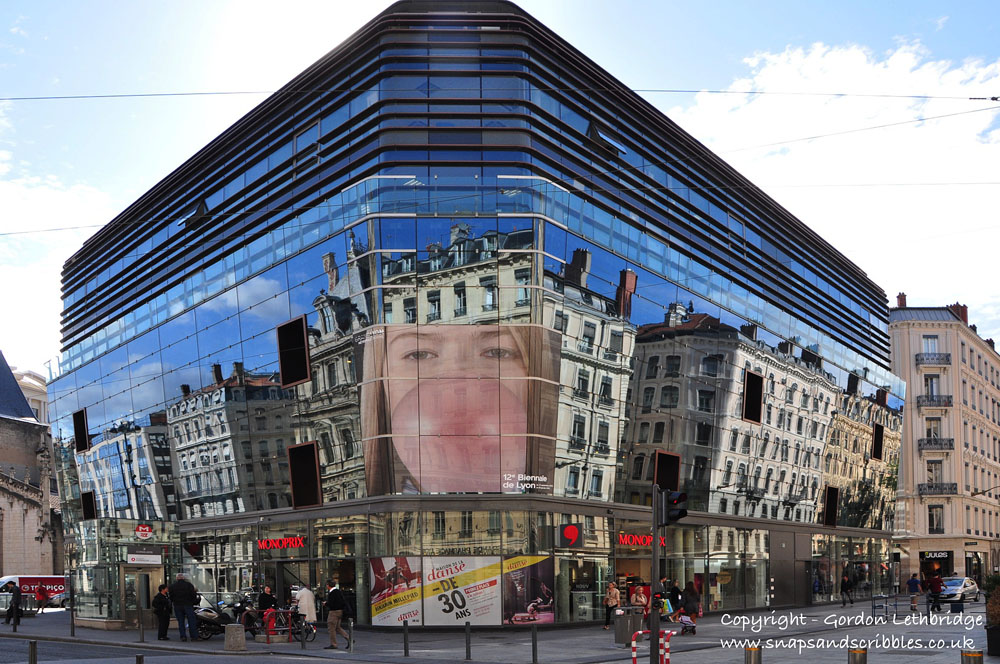
Lyon is twinned with Birmingham and the two cities share a contemporary and controversially designed department store. In Birmingham the store is covered with silver discs and in Lyon it is reflective glass. Both modern structures are surrounded by older buildings but in Lyon at least these are reflected in the facade. It’s really a case of, “Beholder, draw your own conclusions.”
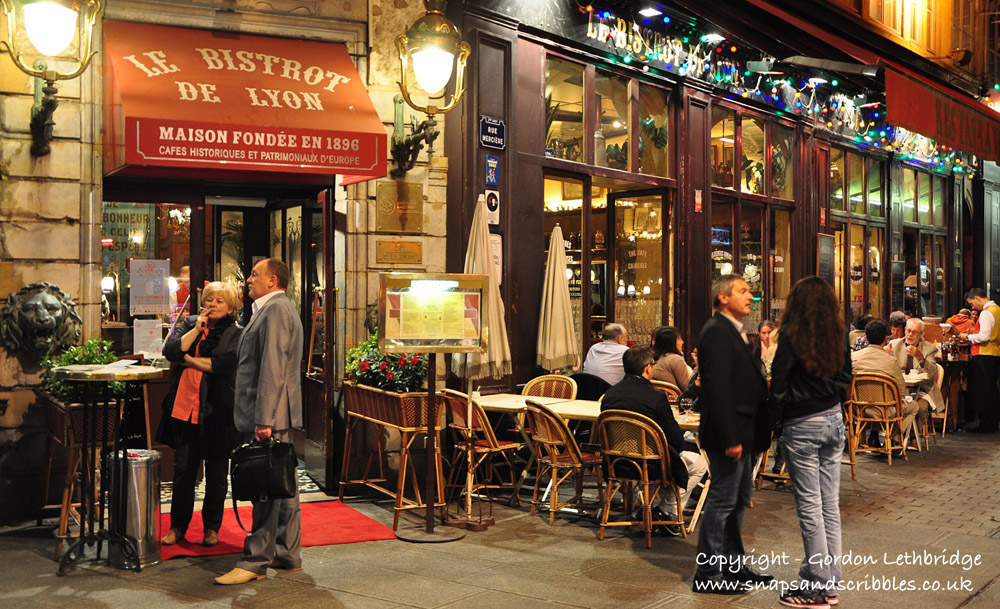
Rue Mercière is the only significant Renaissance remains in the Presqu’île. There are a few traboules here connecting it to the bank of the Saone. Today it is known less for the clothing industry and more as a foodie venue. Restaurants, bistros and cafes line the street. Le Bistrot de Lyon serves great food and is worth stopping at for the breathtaking interior. At the end of Rue Mercière is Place Jacobin with its newly renovated fountain depicting four Lyonnais artists: painter Hippolyte Flandrin, engraver Gérard Audran, sculptor Guillaume Coustou and architect Philibert Delorme.
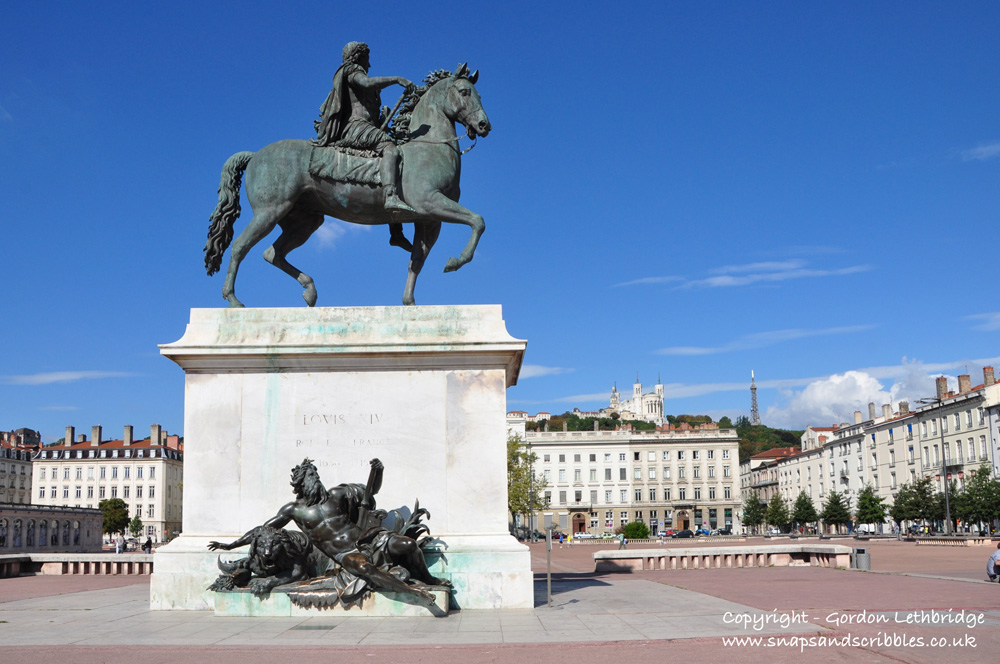
Place Bellecour Bellacour is the largest square in Europe. In the centre of the square is a large statue of Louis XIV on horse back. The view across the square to the Fouvière Basilica is one of the classic views of Lyon. The south of the square is filled with gardens, cafes and a children’s play area. In one corner is a bell tower, all that remains of the Hôpital de la Charité which was demolished in 1932.
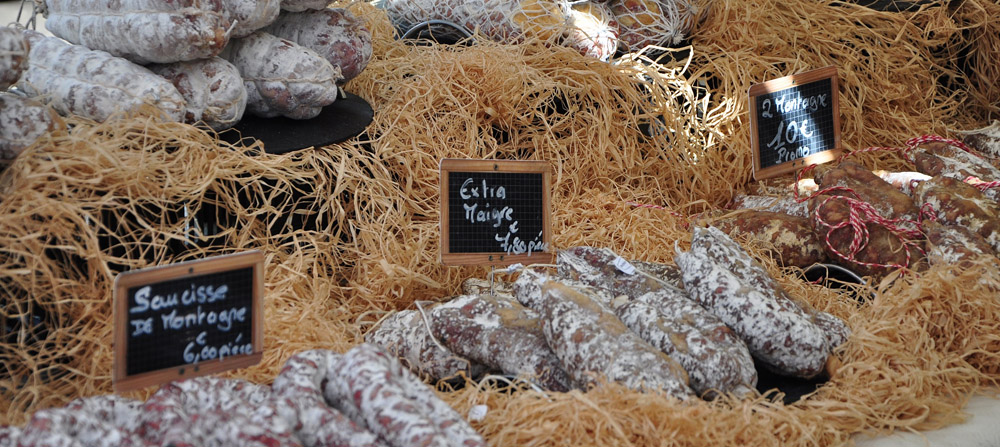
You can wander along the banks of both the Rhone and the Saone. Each has a character of it own. They say that if you get lost head for a river. If the houses are white then you are on the Rhone if they are pastel pink or yellow then its the Saone. This difference reflects the era in which they were built with buildings on the Rhone being the more elegant. The banks of the Saone I found more appealing with the bustling secondhand book market, a daily produce market and the occasional cafe.
Croix Rousse is the area in the north of the peninsula. This was where the silk weavers moved to from Vieux Lyon. Some of the features such as the traboules they brought with them. The houses they built had rooms with high ceilings that could accommodate the new weaving machines. Croix Rousse has it’s own unique ambience and often feels like a village than part of a bustling metropolis.
Being built on a hill means you get a good view of the layout of the city of Lyon. Although Croix Rousse can be reached by metro it is better to explore the steep passageways and steps that take you through small parks and shady squares on foot. A good place to start is the Place de Sathonay, a shady neighbourhood square were the locals play pétanque. A good place to end is the Murs de Canuts – the silk workers mural. This is the largest of Lyon’s famous murals. It’s very deceptive being painted in the trompe l’oeil style; and difficult to see where reality begins and ends.
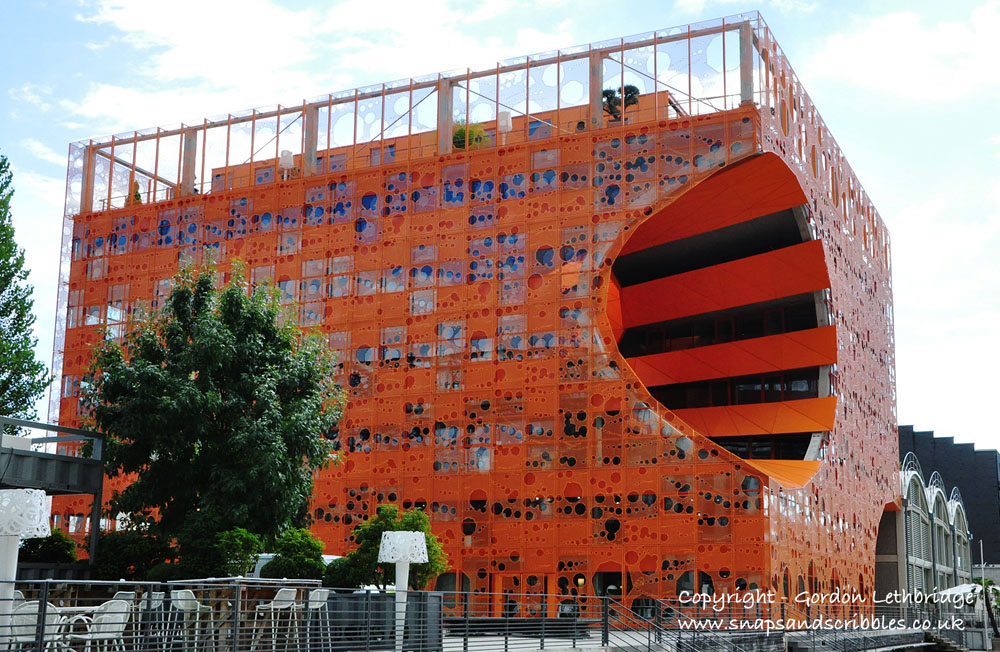
Where the Saone and Rhone meet is the appropriately name Confluence district. This was Lyon’s docklands full of warehouses, wharfs and SNCF work yards. Now, like many docklands areas, it is being redeveloped with large shopping areas, apartments and offices, marinas and other leisure facilities. One of the recent buildings, a bright orange cube, has been christened by the Lyonnais “La Emmental” because it’s facade was designed with so many “holes” it resembles Swiss cheese.
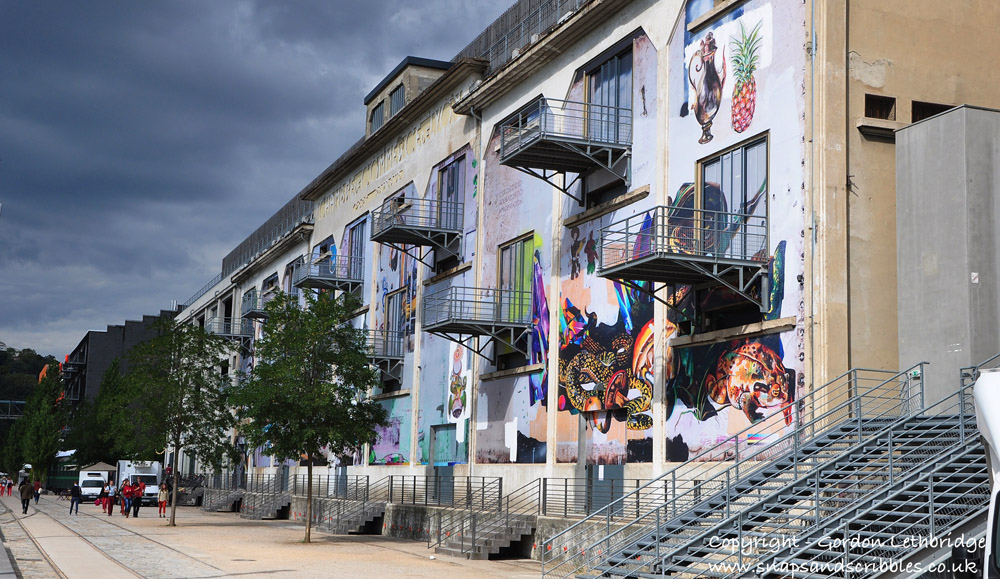
The old sugar warehouse, La Sucrière, is the main venue for Lyon’s modern art Biennale de Lyon but serves as a space for art exhibitions during time when the Biennale is not in residence. The Confluence area is still under development and is the best place to go to see some of Lyon’s modern, cutting edge architecture.
Lyon’s two rivers have shaped its history and development as a city. The natural barriers of the river mean much of the elegance of Lyon is contained in a very walkable area. My visit to Lyon changed my perception of a city from one of heavy industry to one of grace and beauty.
Have you visited Lyon? What did you think of the city? Let us know in the comments below.
Lyon Tourist Office and Convention Bureau
Declaration: I visited Lyon as guest of the Lyon Tourist Office and Convention Bureau. However, as always I maintain full editorial control over the content and my opinions, positive or negative are my own.

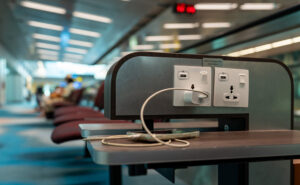
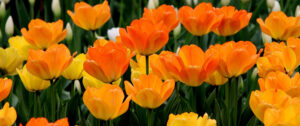
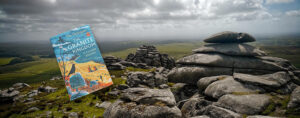
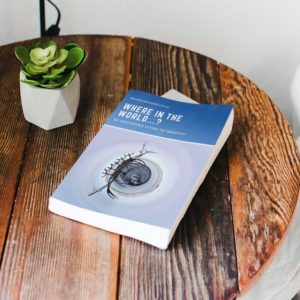
6 thoughts on “Lyon – between two rivers”
Great and informative post about my favourite city with stunning photos.
Thank you for the compliment. Lyon is a terrific city to visit and there is so much to see and even more taste. Future blog posts will deal with these topics.
Lyon is a great city, one of the universities I worked with when I did my uni was in Lyon and visited the city a lot of times. I never get enough of it. It is just truly a wonderful place to be.
I agree with you about Lyon. I just can’t wait until I have the chance to return. There is so much more of the city to see and so many aspects of it’s culture still to discover.
Hope to see many of you in our beautiful city. If I may, it is BellEcour place and not Bellacour 😉
I hope to come and visit the city again sometime. My stay in Lyon was too short and there was so much more to experience. Thank you for pointing out the error; it has now been corrected.
Comments are closed.